In honor of Banned Book Week, today, we take a look at five books that have recently been officially challenged or publicly denounced, and their authors responses to them, and why #weneeddiversebooks in our lives, and in our libraries:
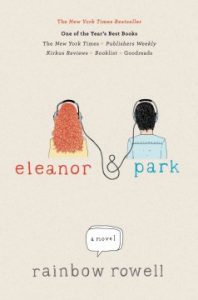 Eleanor and Park: When it was first released in 2013, Rainbow Rowell’s first YA novel got a huge amount of praise and acclaim, and rose up the ranks of the New York Times bestseller list in short order. A group of high school librarians in Minnesota also selected it as a summer reading book and invited Rowell to speak to their students and at a local public library in the fall. That was when two parents, with the support of the district’s Parents Action League convinced the Anoka-Hennepin school district, the county board, and the local library board to cancel the events, remove the book, and discipline the librarians who selected it, declaring that Eleanor & Park was a “dangerously obscene” book. In the end, the book was retained (an no librarians were harmed), and Rowell was re-invited to speak in St. Paul. Though she hesitated to speak about the incident, in an interview with The Toast, Rowell discussed specifically why the challenge was absurd, and why books like Eleanor and Park are so vital:
Eleanor and Park: When it was first released in 2013, Rainbow Rowell’s first YA novel got a huge amount of praise and acclaim, and rose up the ranks of the New York Times bestseller list in short order. A group of high school librarians in Minnesota also selected it as a summer reading book and invited Rowell to speak to their students and at a local public library in the fall. That was when two parents, with the support of the district’s Parents Action League convinced the Anoka-Hennepin school district, the county board, and the local library board to cancel the events, remove the book, and discipline the librarians who selected it, declaring that Eleanor & Park was a “dangerously obscene” book. In the end, the book was retained (an no librarians were harmed), and Rowell was re-invited to speak in St. Paul. Though she hesitated to speak about the incident, in an interview with The Toast, Rowell discussed specifically why the challenge was absurd, and why books like Eleanor and Park are so vital:
…this isn’t really about me. It’s about the students at these schools, who already read my book or might like to – or might like to read other books that reflect their real lives.
When this all happened last month, I was really upset by it. (I still cry when I talk or type about it.)…Because the characters are so close to my heart, and everything about this campaign deliberately misses the point of Eleanor and Park’s story.
When I told my sister that some people (Ed. note: or, you know, “one guy”) were outraged by the language in my book, she said, “They should try living through it.”
And that’s just it. Eleanor & Park isn’t some dystopian fantasy about a world where teenagers swear and are cruel to each other, and some kids have terrible parents.
Teenagers swear and are cruel to each other. Some kids have terrible parents.
Some girls have terrible stepdads who shout profanity at them and call them sluts – and some of those girls still manage to rise above it.
When these people call Eleanor & Park an obscene story, I feel like they’re saying that rising above your situation isn’t possible.
That if you grow up in an ugly situation, your story isn’t even fit for good people’s ears. That ugly things cancel out everything beautiful.
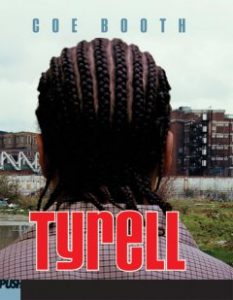 Tyrell: Author Coe Booth has won acclaim from critics and readers alike for her gritty, down-to-earth stories about what it is really like to grown up in an inner city; this book, specifically, follows 15-year-old Tyrell, who lives in a homeless shelter with his sister and mother, and constantly tries to turn away from the life that landed his father in prison. However, parents in Chesterfield County had demanded that certain books be removed from the District’s libraries, Tyrell included, because they discuss allegedly inappropriate themes such as drug use, sexuality, and violence. Many, including State Senator Amanda Chase, also demanded that labels and rating be given to books to mark them as “violent” or “sexually explicit”, based on a number of passages that were taken wildly out of the context of the story. Though the books were retained in the library, the School Board stated that, going forward, it would encourage “Continued professional development for librarians regarding collection development” and “Enhanced outreach and communication between librarians, teachers, students and parents about appropriate book selections to meet the interests and needs of individual students.” As Booth herself noted in an article for the National Coalition Against Censorship:
Tyrell: Author Coe Booth has won acclaim from critics and readers alike for her gritty, down-to-earth stories about what it is really like to grown up in an inner city; this book, specifically, follows 15-year-old Tyrell, who lives in a homeless shelter with his sister and mother, and constantly tries to turn away from the life that landed his father in prison. However, parents in Chesterfield County had demanded that certain books be removed from the District’s libraries, Tyrell included, because they discuss allegedly inappropriate themes such as drug use, sexuality, and violence. Many, including State Senator Amanda Chase, also demanded that labels and rating be given to books to mark them as “violent” or “sexually explicit”, based on a number of passages that were taken wildly out of the context of the story. Though the books were retained in the library, the School Board stated that, going forward, it would encourage “Continued professional development for librarians regarding collection development” and “Enhanced outreach and communication between librarians, teachers, students and parents about appropriate book selections to meet the interests and needs of individual students.” As Booth herself noted in an article for the National Coalition Against Censorship:
A lot of times parents think that 13 year olds are not ready for the material in the book, this is always really interesting because before I was a writer, I worked in child protective services. I investigated child abuse. I counseled children who had been sexually abused, so I know for a fact that children the age of thirteen and actually way younger, are living through the experiences that are in the book. You know, these kids are actually living these experiences, but god forbid they’re reading about them. It’s such a weird line that is drawn…
I think that reading books like mine, and just different books, different cultures, different experiences, like I said before, it makes young people see that they are connected. There are ways that they’re not so different. They’re not so far apart. They have the same struggles with their parents, school, relationships, you know, the same exact things. Yes, they may speak a little different. They might live in a different kind of neighborhood. But underneath all of that, they’re still someone trying to figure out who they are, which is basically what young adult literature is, right?
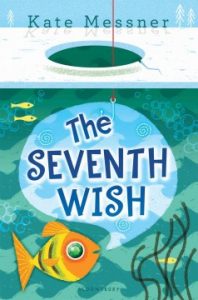 The Seventh Wish: Kate Messner’s book is about a magic fish. It also deals with the very real epidemic of opiate addiction in the United States in a way that is accessible to children. In order to promote the book, Messner was invited to speak to children in Vermont, at South Burlington’s Chamberlin Elementary School–an invitation that was rescinded three days before the event because, the school’s principle, “felt the book and my presentation about the writing process behind it would generate many questions that they would not be able to adequately answer and discuss”. Despite this, the school also proceeded to return the 20 copies they had ordered from a local bookstore to display in the school library. Though not strictly banned, the incident set off a social media firestorm, and Messner blogged about a letter she received from a school librarian which stated (in part), “as a mother of a fourth grader, I would never give him a book about heroin because …I just don’t think that at 10 years old he needs to worry about that on top of all of the other things he already worries about… For now, I just need the 10 and 11-year-olds biggest worry to be about friendships, summer camps, and maybe their first pimple or two.” In response, Messner wrote:
The Seventh Wish: Kate Messner’s book is about a magic fish. It also deals with the very real epidemic of opiate addiction in the United States in a way that is accessible to children. In order to promote the book, Messner was invited to speak to children in Vermont, at South Burlington’s Chamberlin Elementary School–an invitation that was rescinded three days before the event because, the school’s principle, “felt the book and my presentation about the writing process behind it would generate many questions that they would not be able to adequately answer and discuss”. Despite this, the school also proceeded to return the 20 copies they had ordered from a local bookstore to display in the school library. Though not strictly banned, the incident set off a social media firestorm, and Messner blogged about a letter she received from a school librarian which stated (in part), “as a mother of a fourth grader, I would never give him a book about heroin because …I just don’t think that at 10 years old he needs to worry about that on top of all of the other things he already worries about… For now, I just need the 10 and 11-year-olds biggest worry to be about friendships, summer camps, and maybe their first pimple or two.” In response, Messner wrote:
We don’t serve only our own children. We don’t serve the children of 1950. We don’t serve the children of some imaginary land where they are protected from the headlines. We serve real children in the real world…And whether you teach in a poor inner city school or a wealthy suburb, that world includes families that are shattered by opioid addiction right now. Not talking about it doesn’t make it go away. It just makes those kids feel more alone.
When we choose books for school and classroom libraries, we need to remember who we serve. We serve the kids. All of them. Even the kids whose lives are not what we might want childhood to look like. Especially those kids.
When we quietly censor books that deal with tough issues… we are hurting kids. Because no matter where we teach, we have students who are living these stories. When we say, “This book is inappropriate,” we’re telling those children, “Your situation…your family…your life is inappropriate.” This is harmful. It directly hurts children. And that’s not what we do.
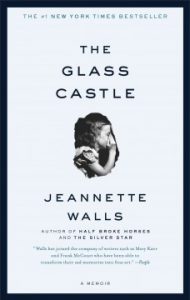 The Glass Castle: Jeannette Wall’s memoir of her nomadic, poverty-stricken childhood, her siblings, and her deeply troubled parents has been hailed as a modern classic, and remained on the New York Times bestsellers list for over 100 weeks. However, this February, the parents of several students in West Allegheny, Pennsylvania, descended on the school district’s meeting, arguing the book was inappropriate for children under the age of 18. One parent stated that “The school district is adding, I feel, more emotional distress by placing these types of books in their hands” (though no one voiced an issue with the massacres in The Odyssey, or the sex and murder in Romeo and Juliet….However, in response to the school board’s decision to only teach excerpts from the book, some 200 students signed a petition asking the district not to use censorship in an attempt to shield teens from problems they may be encountering in their lives. According to Renae Roscart, aged 15, who wrote the petition:
The Glass Castle: Jeannette Wall’s memoir of her nomadic, poverty-stricken childhood, her siblings, and her deeply troubled parents has been hailed as a modern classic, and remained on the New York Times bestsellers list for over 100 weeks. However, this February, the parents of several students in West Allegheny, Pennsylvania, descended on the school district’s meeting, arguing the book was inappropriate for children under the age of 18. One parent stated that “The school district is adding, I feel, more emotional distress by placing these types of books in their hands” (though no one voiced an issue with the massacres in The Odyssey, or the sex and murder in Romeo and Juliet….However, in response to the school board’s decision to only teach excerpts from the book, some 200 students signed a petition asking the district not to use censorship in an attempt to shield teens from problems they may be encountering in their lives. According to Renae Roscart, aged 15, who wrote the petition:
You’re trying to protect the children and I see that, but you’re really sheltering them and making them ignorant to issues that actually plague our society and are relevant right now…How is this inappropriate for our children when they’re going through this right now? What time could be more relevant to learn this than when they’re going through it? By cutting these particular things out, you’re pretending that these statistics don’t exist. You are pretending that sexual assault and alcoholism isn’t something that youths encounter. And that is a problem.
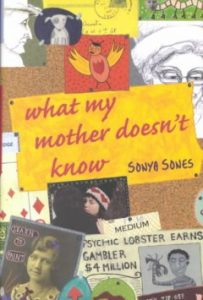 What My Mother Doesn’t Know: Sonya Sones book is a novel-in-verses, describing the world through the eyes of a teenage girl, who is searching for her ‘Mr. Right’, and coping with–and learning to appreciate–the changes in her body as she goes through puberty. The book was praised by critics and lauded by readers…and yet it became one of the most challenged books of the 21st century. According to the American Library Association’s website, Sones’ book was removed from the library shelves of the Rosedale Union School District in Bakersfield, California in 2003 because of discomfort with the poem, “Ice Capades”—a teenage girl’s description of how her breasts react to cold. It was further challenged at the Bonnette Junior High School library in Deer Park, Texas in 2004 because the book includes foul language and references to masturbation. Still Sones noted how proud she was of her book being so controversial, and stated on her blog:
What My Mother Doesn’t Know: Sonya Sones book is a novel-in-verses, describing the world through the eyes of a teenage girl, who is searching for her ‘Mr. Right’, and coping with–and learning to appreciate–the changes in her body as she goes through puberty. The book was praised by critics and lauded by readers…and yet it became one of the most challenged books of the 21st century. According to the American Library Association’s website, Sones’ book was removed from the library shelves of the Rosedale Union School District in Bakersfield, California in 2003 because of discomfort with the poem, “Ice Capades”—a teenage girl’s description of how her breasts react to cold. It was further challenged at the Bonnette Junior High School library in Deer Park, Texas in 2004 because the book includes foul language and references to masturbation. Still Sones noted how proud she was of her book being so controversial, and stated on her blog:
Though you’ve got to have thick skin to be a banned author. Parents from all across the country have written to me to rant about how disgusting and inappropriate they think my book is, and have filed formal complaints called “challenges” to attempt to get it removed from middle school and high school libraries. There are apparently legions of narrow-minded folks out there who feel that if a book isn’t appropriate for their own child, then no child should be allowed to read it…But the problem is that the people who try to ban books often don’t actually read them. They just read the juicy parts. I can’t tell you how many letters I’ve received from incensed parents telling me that they were horrified when they read “excerpts” of my book. If these people had taken the time to read the entire book, they’d have seen that when the narrator, 14-year-old Sophie, is pressured by her boyfriend to have sex, she refuses to let him push her further than she wants to go. In fact, his sexually aggressive behavior is the main reason that Sophie stops dating him….I think the great Irish playwright and critic, George Bernard Shaw, summed it up brilliantly: “Censorship ends in logical completeness when nobody is allowed to read any books except the books that nobody reads.”
Until next week, dear readers–keep being dangerous!
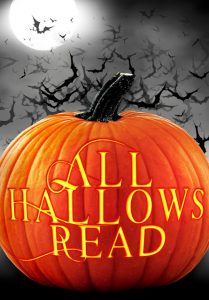
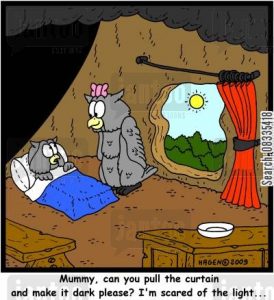
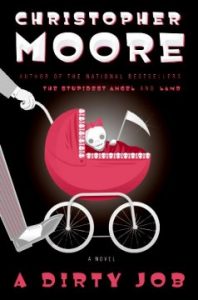 A Dirty Job by Christopher Moore
A Dirty Job by Christopher Moore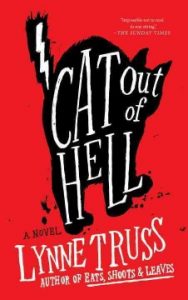 Cat Out of Hell by Lynne Truss
Cat Out of Hell by Lynne Truss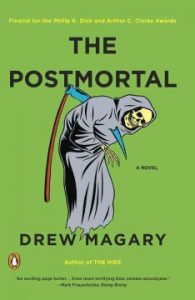 The Postmortal by Drew Magary
The Postmortal by Drew Magary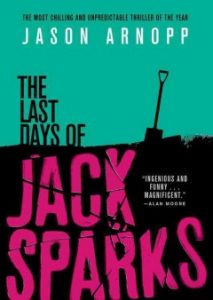 The Last Days of Jack Sparks by Jason Arnopp
The Last Days of Jack Sparks by Jason Arnopp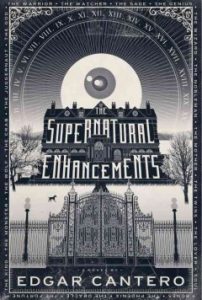 The Supernatural Enhancements by Edgar Cantero
The Supernatural Enhancements by Edgar Cantero
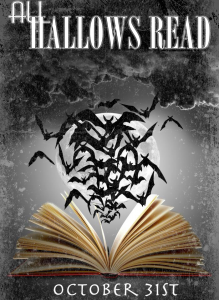
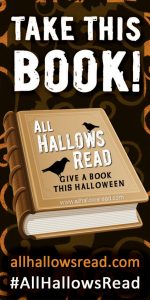
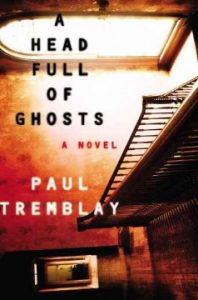 A Head Full of Ghosts
A Head Full of Ghosts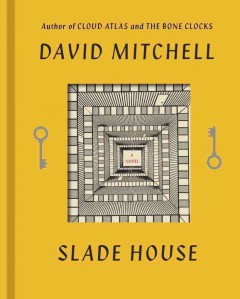 Slade House
Slade House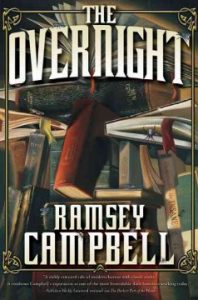 The Overnight
The Overnight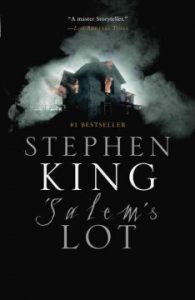 ‘Salem’s Lot:
‘Salem’s Lot: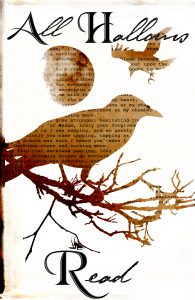
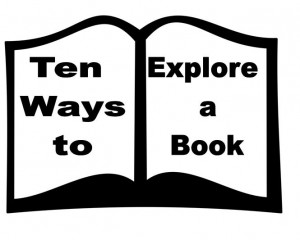
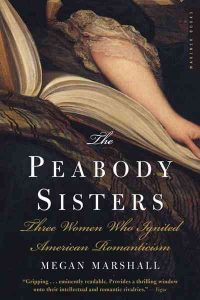
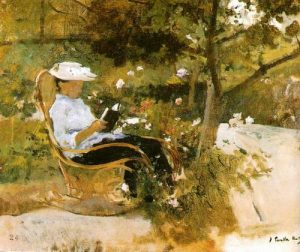
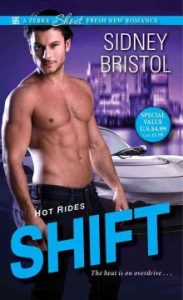 This book seemed, at first, to be way outside my literary comfort zone, but within only a few pages, I was completely hooked, and totally captivated by Bristol’s brilliant characterization and fiercely emotional love story. The series as a whole focuses on the employees of a classic car garage, who are all tough, fearless street racers…and who are all also undercover government agents (usually as a way to pay down some sort of debt they owe to Uncle Sam, or because they have a personal stake in the mission at hand).
This book seemed, at first, to be way outside my literary comfort zone, but within only a few pages, I was completely hooked, and totally captivated by Bristol’s brilliant characterization and fiercely emotional love story. The series as a whole focuses on the employees of a classic car garage, who are all tough, fearless street racers…and who are all also undercover government agents (usually as a way to pay down some sort of debt they owe to Uncle Sam, or because they have a personal stake in the mission at hand).
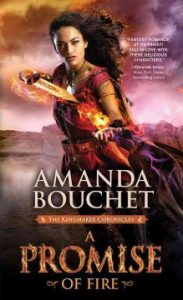 First time novelist Amanda Bouchet has given the gift of a completely addictive fantasy romance to genre fans everywhere.
First time novelist Amanda Bouchet has given the gift of a completely addictive fantasy romance to genre fans everywhere. 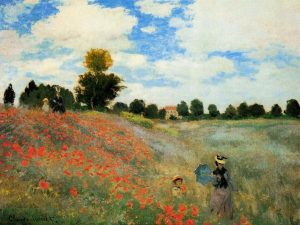


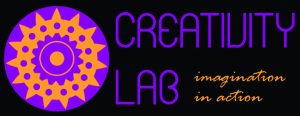
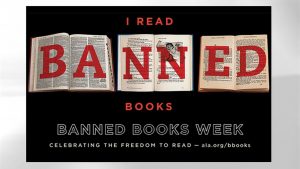
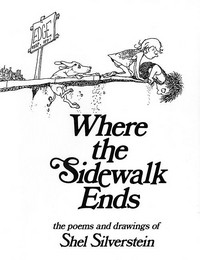
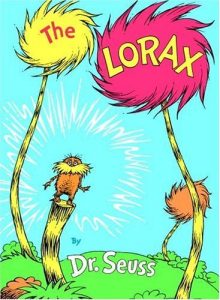
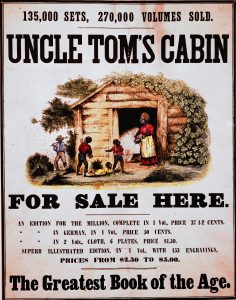
 Eleanor and Park
Eleanor and Park Tyrell
Tyrell The Seventh Wish
The Seventh Wish The Glass Castle
The Glass Castle What My Mother Doesn’t Know
What My Mother Doesn’t Know